Optimize Your PC for Solidworks Success
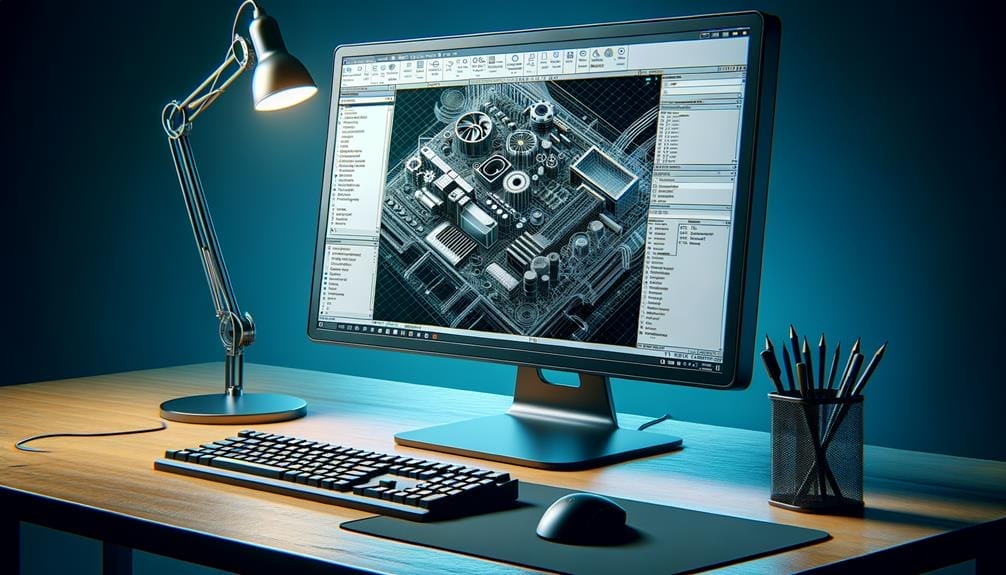
Is your work in Solidworks marred by slow performance and annoying disruptions? Enhancing your computer to better support Solidworks can significantly boost your productivity in design tasks.
Understanding the crucial system requirements and key components necessary to power through complex designs is essential. From selecting the right processor and graphics card to maximizing your RAM and storage capabilities, these steps are vital in ensuring a seamless workflow.
But where do you start? Stay tuned to discover the essential strategies and tips for optimizing your PC for Solidworks success.
Key Takeaways
- Solidworks requires a powerful PC with a 64-bit operating system, a dedicated graphics card, and at least 16GB of RAM.
- Cutting corners on PC components may result in a system that struggles with basic designs in Solidworks.
- A high operating frequency and single-core performance are crucial for optimal CPU performance in Solidworks.
- Workstation graphics cards, such as Quadro GPUs, provide stability, certification, and driver support, but gaming-grade graphics cards can offer similar performance at a lower cost.
Understanding Solidworks System Requirements
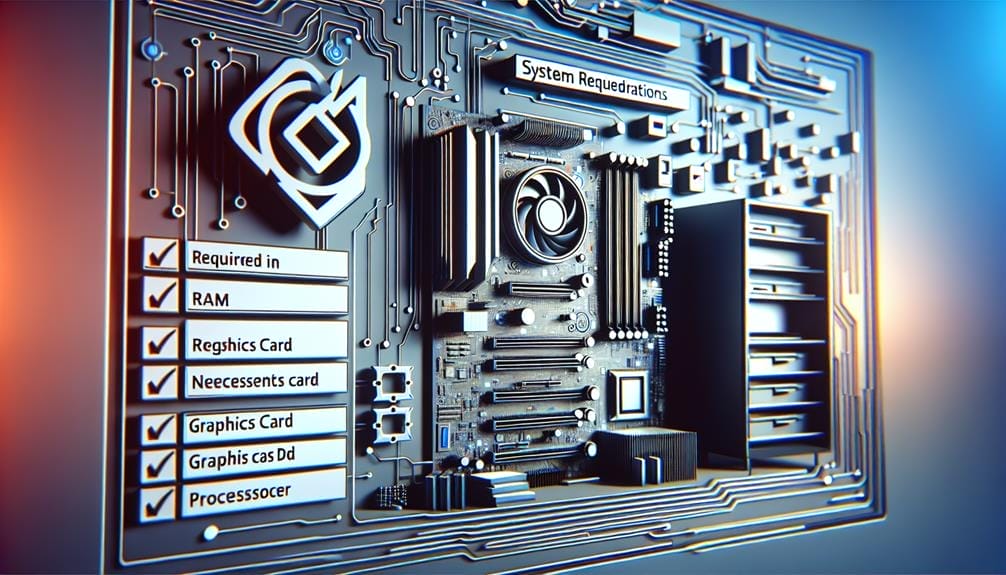
To ensure optimal performance while using Solidworks, understanding the system requirements is crucial.
System compatibility and minimum specifications play a vital role in determining the efficiency of your experience.
Operating systems must be 64-bit, with Windows 10 or Windows 11 being the only supported options.
Processors should be 64-bit Intel or AMD, with a high operating frequency and single-core performance being essential.
A minimum of 16GB of RAM is required, but 32GB or even 64GB is recommended for more complex tasks.
When it comes to graphics cards, a dedicated and officially certified one is necessary for smooth operations.
Additionally, using an SSD for storage is highly advised to enhance overall performance.
Understanding and meeting these requirements will ensure a smoother and more efficient Solidworks experience.
Importance of Powerful PC for Solidworks
Investing in a high-performance PC is essential for maximizing your productivity and efficiency when using Solidworks. Common PC performance issues in Solidworks, such as slow rendering and lag during complex assembly designs, can significantly hinder your workflow.
A powerful PC equipped with a high operating frequency CPU and workstation-grade graphics card can mitigate these issues. Additionally, having ample RAM, ideally 32GB, is crucial for handling large and intricate assemblies without performance bottlenecks.
Furthermore, considering the advantages of cloud computing for Solidworks, a powerful PC can seamlessly integrate with cloud-based solutions, offering scalability and collaboration opportunities.
CPU Recommendations for Solidworks
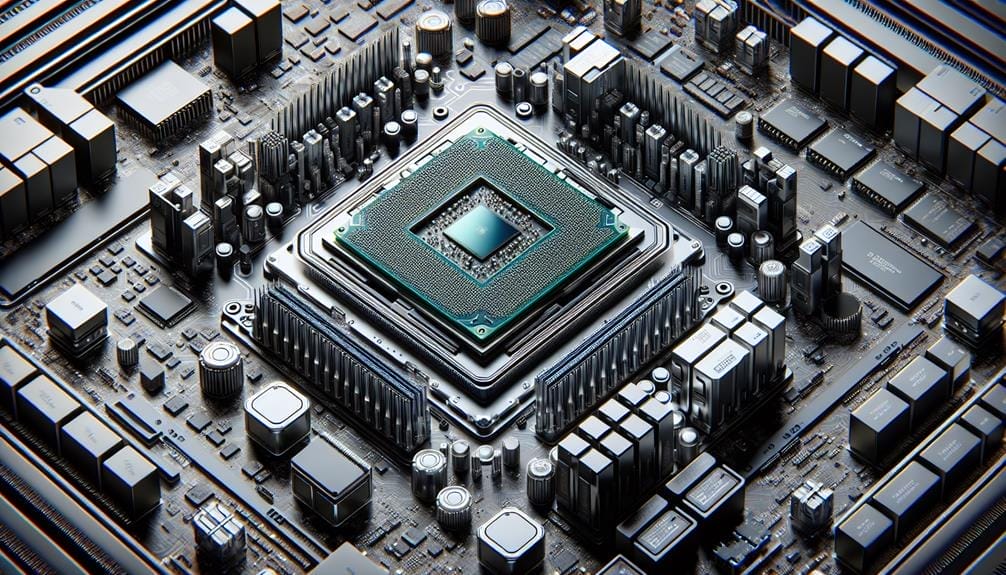
For optimal performance in Solidworks, selecting a high operating frequency CPU with strong single-core performance is crucial. When considering CPU recommendations for Solidworks, here are some important factors to keep in mind:
- High Operating Frequency: Look for CPUs with high clock speeds to ensure swift processing of commands and operations.
- Single-Core Performance: Opt for CPUs with strong single-core performance as Solidworks relies heavily on single-threaded tasks.
- Rendering and Simulation: Consider higher core count processors for improved rendering and simulation performance.
- Top-of-the-Line CPUs: Invest in top-of-the-line CPUs from Intel or AMD for the best Solidworks experience.
- Mainstream Processors: Mainstream processors from Intel and AMD offer a cost-effective yet powerful solution for Solidworks tasks.
When selecting a CPU, prioritize performance that aligns with Solidworks' demands and ensures processor compatibility.
GPU Recommendations for Solidworks
When considering GPU recommendations for Solidworks, it's essential to understand the impact of graphics performance on rendering and simulation tasks.
Workstation graphics cards, such as the Quadro series, are recommended for stability, certification, and driver support. These cards are specifically designed for professional applications like Solidworks.
However, gaming-grade graphics cards, including NVIDIA's RTX models, offer similar performance at a lower cost. The RTX series, in particular, provides impressive performance in Solidworks, making them a compelling alternative to workstation cards.
It's important to weigh the benefits of workstation cards versus gaming cards based on your specific needs and budget. Ultimately, the choice between Quadro and RTX GPUs will depend on the level of certification, stability, and performance required for your Solidworks projects.
RAM Recommendations for Solidworks
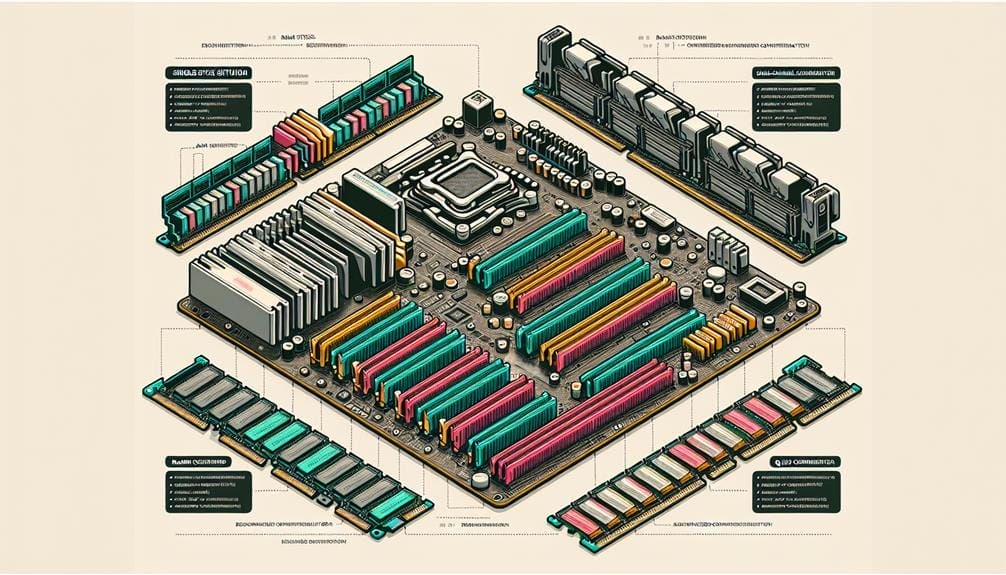
To ensure optimum performance and smooth operation in Solidworks, it's imperative to carefully consider the RAM specifications of your system. When it comes to RAM recommendations for Solidworks, here are some key factors to keep in mind:
- RAM Capacity: Solidworks needs at least 8GB of RAM for basic operations, but 16GB provides a better experience, especially for multitasking. Large and complex assemblies may require 32GB or even 64GB of RAM.
- Performance Impact: Skimping on RAM may result in performance issues, particularly when working with larger projects or complex simulations.
- Optimal RAM Speed: While RAM speed can impact performance, Solidworks isn't as sensitive to RAM speed as other applications. Focus on capacity over speed for Solidworks usage.
- Multitasking: Having ample RAM allows for smoother multitasking, enabling you to work on multiple components or assemblies simultaneously.
- Balanced Configuration: 32GB of RAM is a good middle ground for working in Solidworks, providing the necessary capacity for demanding tasks.
Storage Considerations for Solidworks
Considering the significant impact RAM capacity has on Solidworks performance, it's essential to also address the crucial aspect of storage when optimizing your system for Solidworks.
Solidworks operates more efficiently with faster storage, making the choice between SSD vs HDD important. An SSD, due to its faster read and write speeds, is recommended for optimal Solidworks performance.
Additionally, Solidworks projects can demand a significant amount of storage space, especially when dealing with large and complex assemblies. Therefore, it's advisable to consider storage capacity requirements and ensure that your system has ample space to accommodate your projects without compromising performance.
When optimizing for Solidworks, prioritizing an SSD and ensuring sufficient storage capacity are key factors in achieving smooth and efficient workflow.
Cooling and Power Supply for Solidworks
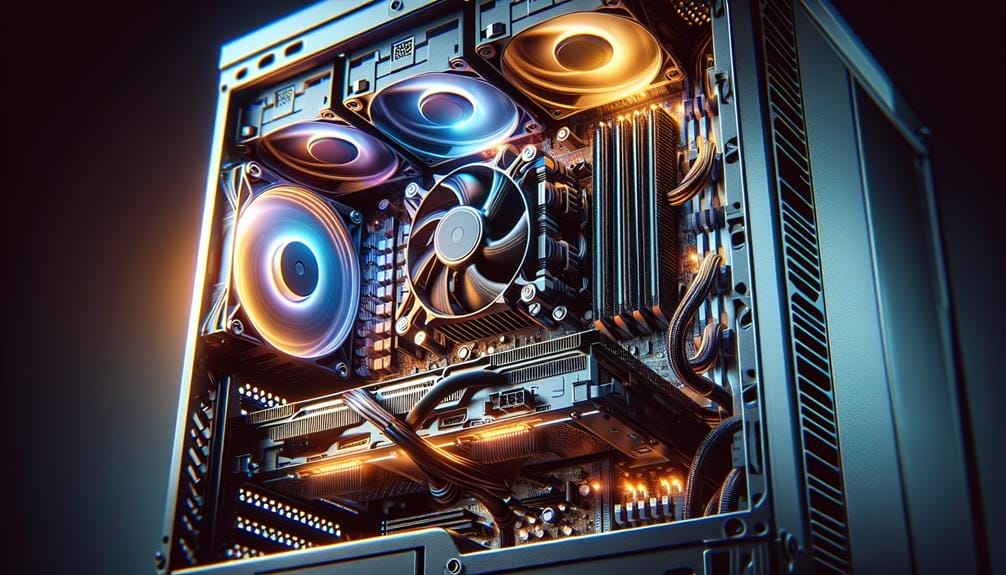
For optimal performance in Solidworks, ensuring efficient cooling and a reliable power supply for your PC is imperative. When setting up your system for Solidworks, consider the following:
- Cooling Efficiency: Proper cooling is essential to prevent overheating, especially during resource-intensive tasks. Ensure your PC has adequate cooling solutions such as fans, heatsinks, or liquid cooling systems to maintain optimal operating temperatures.
- Power Supply Capacity: Solidworks demands power, and a robust power supply is crucial to support the high-performance components. Invest in a power supply unit (PSU) with sufficient wattage and stable power delivery to accommodate the demands of Solidworks and its associated hardware.
Ensuring efficient cooling and adequate power supply capacity won't only optimize your PC's performance but also contribute to its longevity and reliability.
Overclocking and Benchmarking for Solidworks
Overclocking and benchmarking play crucial roles in optimizing the performance of your PC for Solidworks. Overclocking your CPU and GPU can provide significant benefits in terms of processing power and rendering speeds. However, it's important to note that overclocking can also void warranties and potentially reduce the lifespan of your components if not done properly. Before overclocking, benchmarking tools can be used to measure your PC's current performance and identify areas for improvement. Tools such as PassMark, Cinebench, and SPECviewperf can help you assess your system's capabilities and track performance changes after overclocking. Below is a table summarizing the benefits and considerations of overclocking for Solidworks:
| Overclocking Benefits | Considerations |
|---|---|
| Increased Processing Power | Voiding Warranties |
| Faster Rendering Speeds | Potential Component Lifespan Reduction |
| Improved Simulation Performance | Risk of Overheating |
Conclusion
In conclusion, optimizing your PC for Solidworks success is crucial for ensuring a seamless and efficient workflow.
By understanding the essential system requirements and selecting the right components, such as the processor, graphics card, RAM, and storage, you can power through complex designs and simulations with ease.
With the right hardware and informed decisions, you can elevate your Solidworks experience and unlock its full potential, taking your design projects to the next level.

